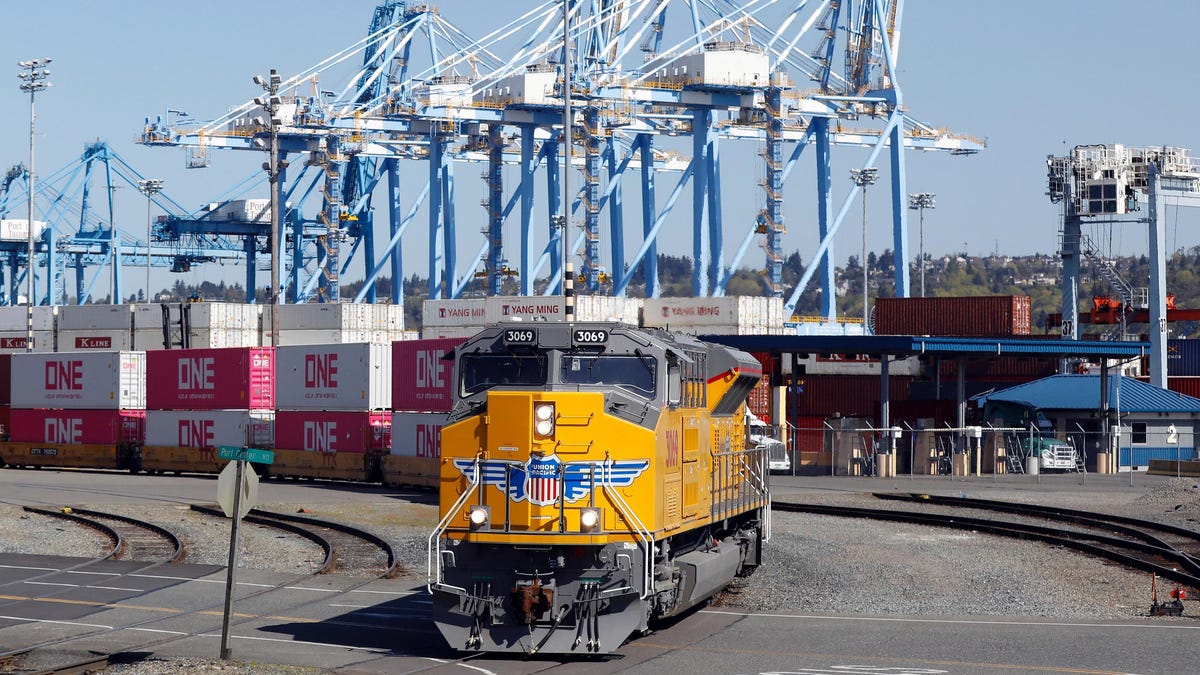There are a bunch of reasons that the ports in Southern California have seen a huge inbound freight uptick in recent years, including the buying habits of Americans and difficulties getting through the canals Suez and Panama. As a result, train freight exiting Los Angeles is also massively up. Unlike other freight corridors pulling any number of difficult-to-sell commodities, this path is largely hauling goods and food. Train heists, for this reason, tend to target trains coming from the ports of Los Angeles and Long Beach. And, for a variety of reasons, uh, they’re getting away with it.
Train companies, themselves in a downward spiral of cost cutting and reduced personnel, aren’t doing a very good job of securing their freight. With just two people on each multiple-mile-long train, and giant freight containers full of international goods secured with simple locks thwarted by bolt cutters or battery-powered saws, it’s not exactly difficult to pilfer thousands of dollars of merchandise without anyone knowing. The train companies already pay for insurance, and the cost to further upgrade locks would be too much, apparently.
Because of the need for trains to roll relatively slowly through Los Angeles traffic, the train tracks through that area are littered with the debris of a million package thefts. And why not? Who is going to catch them? If an alarm goes off in the cab of the train, the conductor needs to stay at the front while a second makeshift security officer walks the length of the train back to check on it. If you’re robbing the back half of a three-mile train, you’ve got the better part of an hour to finish your looting at get gone.
From a recent New York Times piece on the trend:
Piracy is an age-old occupation, particularly prevalent in places and times when large gaps have separated the rich and the poor. But this modern-day resurgence in cargo theft stems in no small part from the extreme ways the internet has altered the buying and selling of things. When the United States Census Bureau began collecting data on e-commerce, in 1998, online sales amounted to some $5 billion. Now that figure is upward of $958 billion; e-commerce revenue is forecast to exceed $2.5 trillion by 2027.
According to that same NYT exposé, the Department of Homeland Security estimates that cargo theft accounts for something between 15 and 35 billion dollars in annual losses. A supply chain risk analyst estimates that freight theft accounts for about 50 billion dollars in annual global losses, meaning the U.S. is a massive hot spot. Those are incredibly huge numbers, but apparently not big enough to actually do something about it. The train companies are insured, Amazon is insured, the person who didn’t receive their package is insured. Nobody feels any pain in the process, so nothing will be done to curb these thefts. It’s just a part of the system, now.

